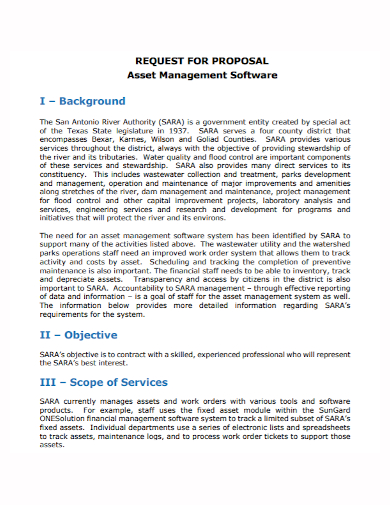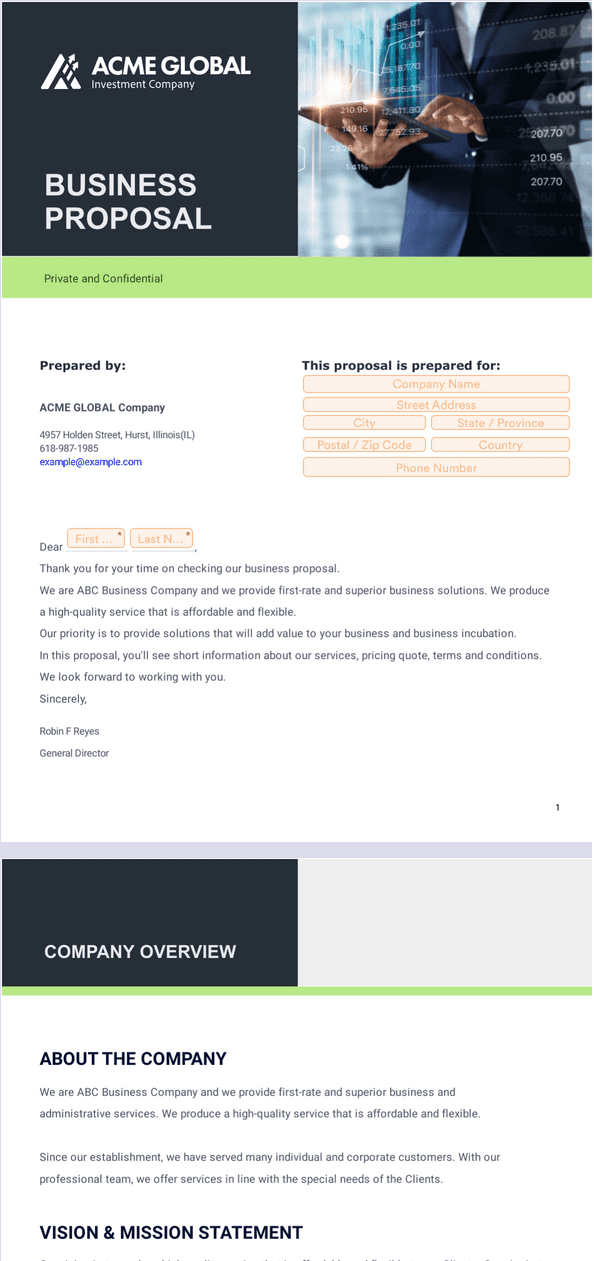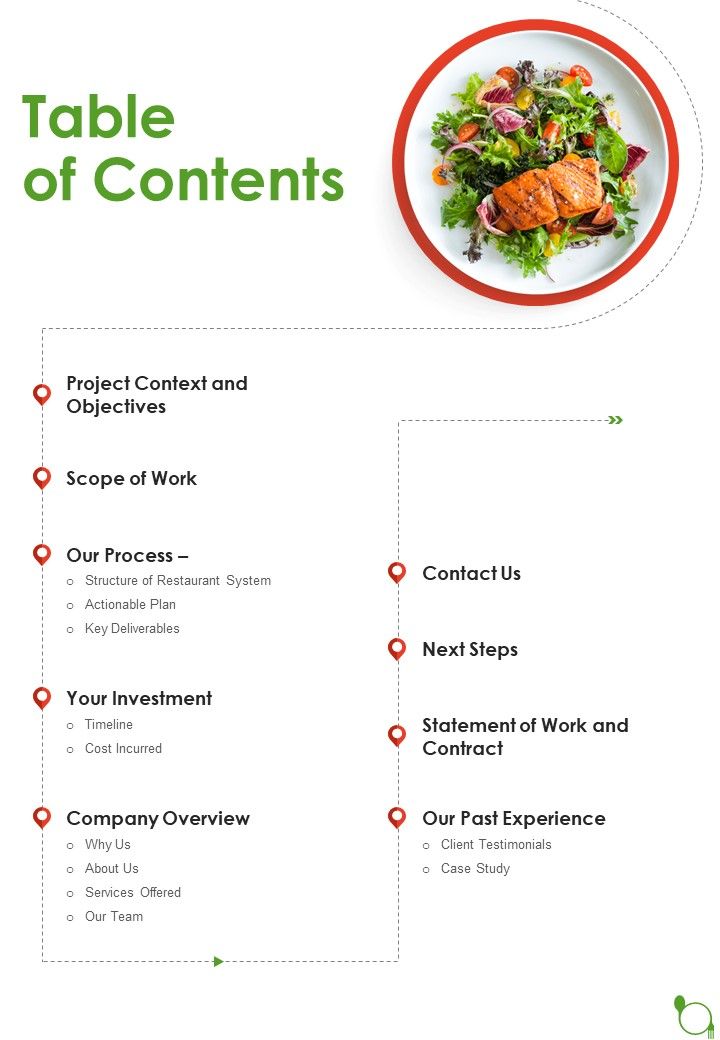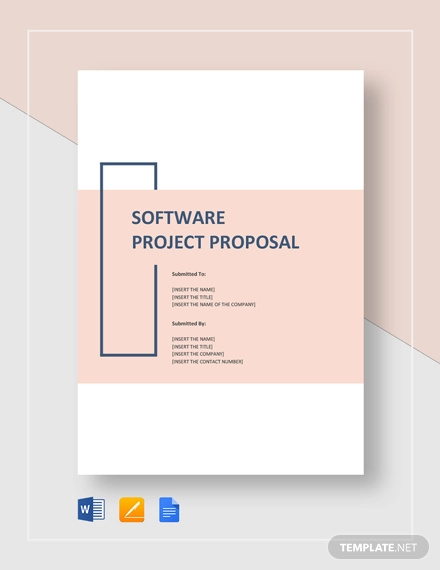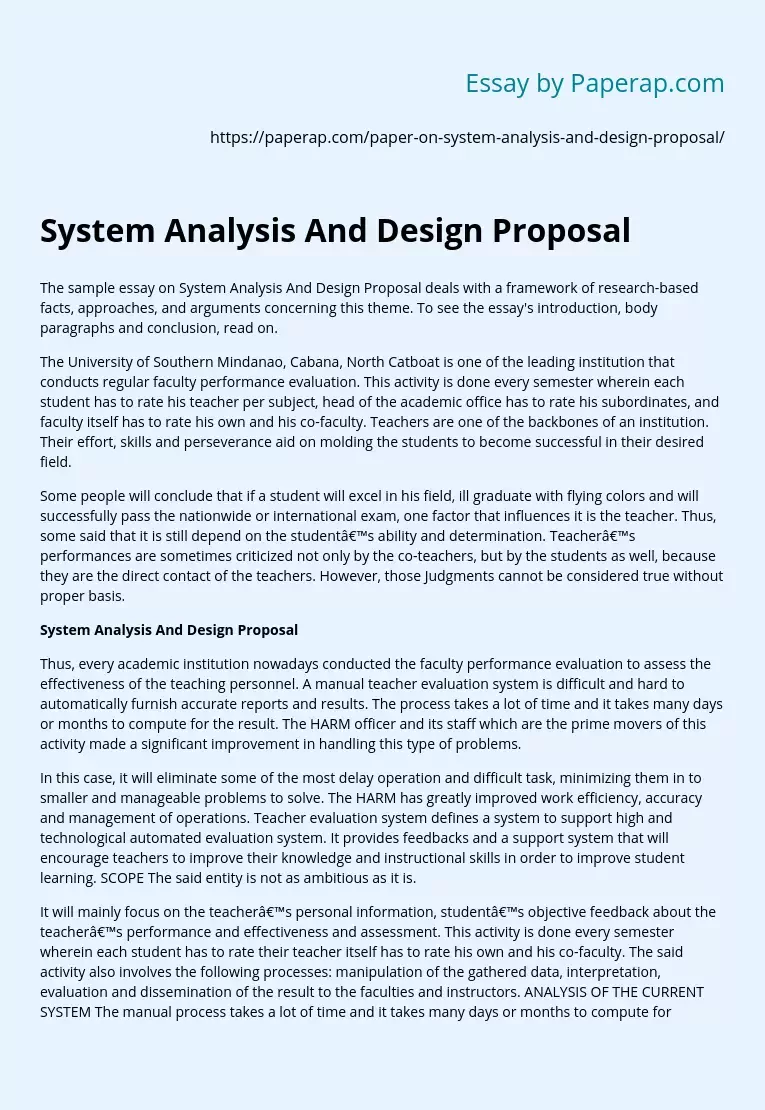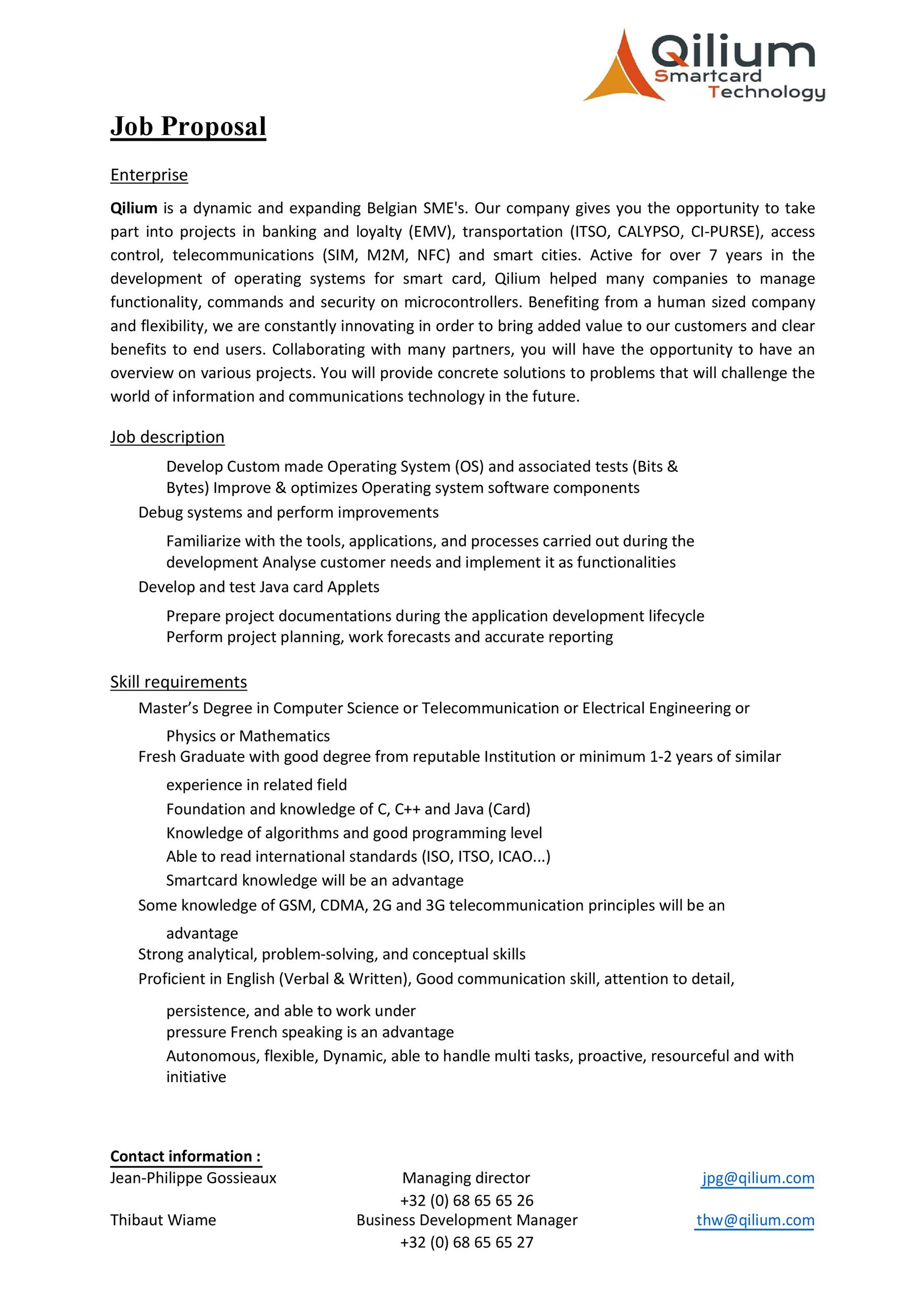A system proposal is a document that outlines a proposed solution to a specific problem or need that an organization or individual has identified. It is typically used to present a solution to a problem or need that has been identified by an organization or individual, and to request funding or resources to implement the proposed solution. A system proposal can be a standalone document or it can be part of a larger project proposal.
There are several key components that are typically included in a system proposal. These include:
Executive summary: This is a brief overview of the entire proposal, including the problem or need being addressed, the proposed solution, and the expected outcomes and benefits.
Problem or need statement: This section clearly and concisely explains the problem or need that the proposed solution is intended to address. It should include information about the current situation, the impact of the problem or need on the organization or individual, and any potential consequences if the problem or need is not addressed.
Proposed solution: This section provides a detailed description of the proposed solution, including how it will address the problem or need, the steps involved in implementing it, and any supporting resources or technologies that will be required.
Implementation plan: This section outlines the specific steps that will be taken to implement the proposed solution, including timelines and budgets. It should also include any potential risks or challenges that may arise and how they will be addressed.
Expected outcomes and benefits: This section should outline the anticipated outcomes and benefits of implementing the proposed solution. It should include information about how the solution will address the problem or need, how it will benefit the organization or individual, and any potential cost savings or efficiencies that may result.
Conclusion: This section should summarize the main points of the proposal and restate the proposed solution and its expected outcomes and benefits.
A system proposal sample might look something like this:
Executive summary:
The XYZ organization is facing a number of challenges in managing its data and information systems. These challenges include outdated technology, limited storage capacity, and difficulty in accessing and sharing information across departments. To address these challenges, we are proposing a new data management system that will improve efficiency, increase storage capacity, and facilitate easier access and sharing of information.
Problem or need statement:
The XYZ organization is currently using outdated technology to manage its data and information systems. This technology is not able to keep up with the organization's growing needs and is limiting our ability to store and access important information. In addition, there are currently significant barriers to information sharing across departments, which is hindering collaboration and decision-making.
Proposed solution:
To address these challenges, we are proposing the implementation of a new data management system. This system will use the latest technology to improve efficiency and increase storage capacity. It will also include features that enable easier access and sharing of information across departments.
Implementation plan:
The implementation of the new data management system will be a multi-step process. First, we will conduct a thorough analysis of the organization's current data and information systems to identify any gaps or areas of improvement. Next, we will work with a team of experts to design and develop the new system. This will include testing and debugging to ensure that the system is fully functional and meets all of the organization's needs. Finally, we will conduct a thorough training program for all staff to ensure that everyone is able to use the new system effectively.
Expected outcomes and benefits:
The implementation of the new data management system is expected to have a number of positive outcomes and benefits for the XYZ organization. It will improve efficiency by streamlining data management processes and reducing the time
